Monaghan farmer Pat McKenna keeps 100 head of Dexter cows and followers on 70ac in the foothills of Slieve Beagh in Co Monaghan and, this summer, he will be trialling virtual fencing for 20 weanlings on the hills.
McKenna also has a sizeable portion of land on the mountain, which has peatland-type soil. He plans to put the weanlings up on the hills by the end of the month.
“I’m in the process of getting 20 collars from a Norwegian company called Nofence.

Pat McKenna keeps 100 head of Dexter cows and followers. \ Claire Nash
“There is an app and you can draw a perimeter on it. The cattle can’t pass this area then,” he told the Irish Farmers Journal.
If the cattle pass the virtual fence line, they will get a pulse through the collar, which McKenna says is similar to the shock from an electric fence.
“It will be super for up there. I can move them from one area to another, strip-graze them or concentrate them on one area,” he said.
Last year, he did a pilot project with a different collar company and said he didn’t have to go up to the hill to check on the cattle as often.
“You’re talking about saving one and a half hours per day. It’s nice to go up there on a good day but it’s a huge time-saver. It’s dynamite for up there.
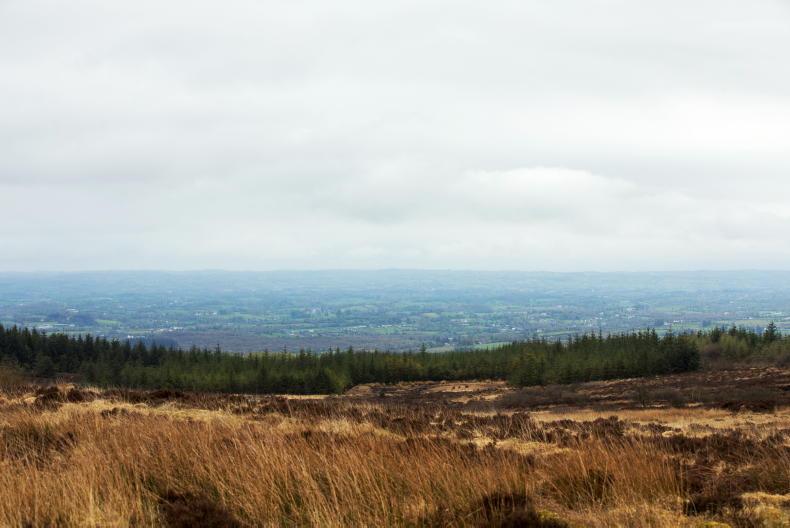
The Slieve Beagh Mountains, where local farmers and the River Blackwater Trust are trialling virtual fencing. \ Claire Nash.
“The area would carry a high burden of Molinia grass and heather. It dies out but it doesn’t rot,” he said, adding that the cattle will graze these areas, reducing the fire risk and rejuvenating areas of the hills.
On the trial last year, he fitted six Dexter cattle with collars and grazed these types of areas.
“If you look at the area now, it’s a dense dead area and not much wildlife, but after the cattle grazed it there were a variety of habitats. It opens it up to being a better habitat,” he said.
“If you put a Charolais cow up there, she’s going to trample the area. There’s a fair depth of peat up there. The Dexters are ideal. They’re light and they thrive on the ground. The few we put up last year thrived well, and that was with bad weather.
“I’ll put the weanlings up by the end of the month. Once the collars come, that should hit the Molinia growth spurt and bring them down as they get fat, around September/October.
“The area is big enough that you could out-winter them up there. A local ecologist thinks that could be a good idea,” he said.
McKenna said he was getting €1,200 to €1,300/head for a 200kg Dexter carcase before COVID-19 hit, selling to Eavaun Carmody of Killenure Castle in Tipperary, but since then he’s had to take the hit and sell to local factories where he has only been getting €700/head.
McKenna is also in GLAS and the Curlew Conservation Programme and said that a lot of people have this idea that farmers don’t give a damn about the environment. “We do, I’m making an effort at that.”
River Blackwater Catchment Trust
McKenna is one of a number of landowners working with local stakeholders such as the River Blackwater Catchment Trust and the local group water scheme to improve Slieve Beagh and the River Blackwater.
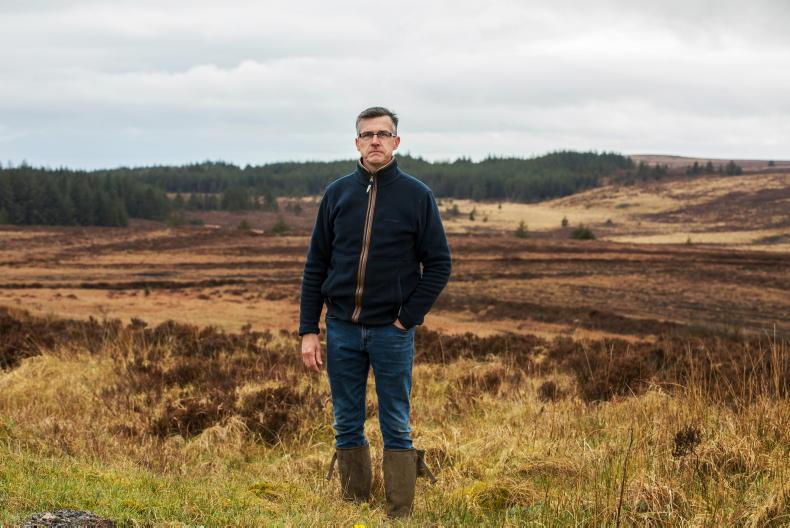
Alan McCabe of the River Blackwater Trust. \ Claire Nash.
The trust, a registered charity, operates on both sides of the border and covers Armagh, Tyrone and Monaghan.
Alan McCabe, from the River Blackwater Catchment Trust, told the Irish Farmers Journal that it has a lot of projects that are “shovel ready”.
Most recently, it was granted €7,500 in funding from the National Parks and Wildlife Service to complete the removal of approximately 50ha of self-seeding conifers and rhododendron within the Slieve Beagh special protection area (SPA).
“This is for phase two of the project,” McCabe said. “Self-seeding Sitka spruce has moved on to the bog from the plantation. This changes the hydrology of the mountain, they suck the moisture out of the ground and create a habitat that is good for other invasive species, such as rhododendron, to grow. Ground nesting birds don’t like to nest here then.
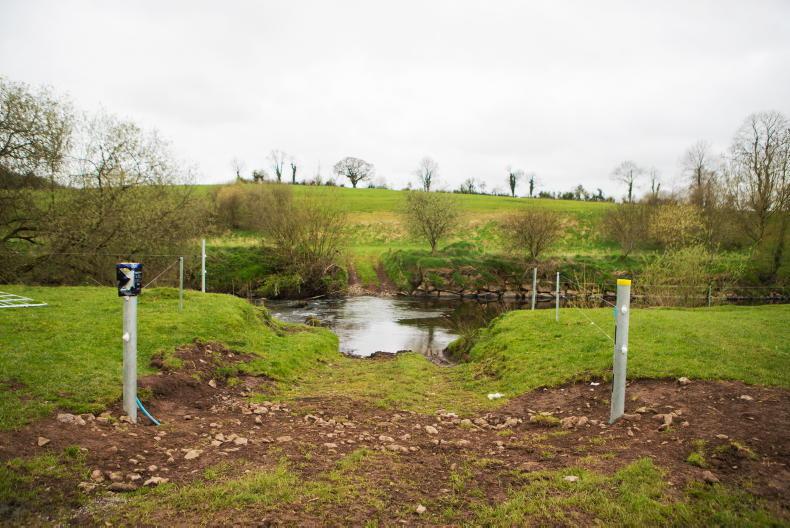
The River Blackwater Trust and local farmers have fenced off a number of watercourses on Slieve Beagh. \ Claire Nash
“Each tree we take out increases the ground nesting area,” McCabe said.
Landowners
Phase one of the clearing project took place in 2018-2019, with the trust approaching private landowners and asking them could they remove invasive species off their land.
“A contractor got 70ha to 80ha cleared. It has completely transformed the area on the mountain. Where we did that work, we have a pair of hen harriers now. Last year on the Republic of Ireland side we had five pairs, and seven pairs on the Northern Ireland side,” he said.
Work on phase two of the clearing will begin in September/October, where there is an area with a higher concentration of rhododendron. The NPWS is fully supporting the work.
Aside from the collars on Pat McKenna’s cattle, the trust is also fencing off watercourses on the mountain, has a project on weed licking and is putting in drinkers on the mountain for cattle with the Tydavnet water scheme.
“We have had brilliant buy-in from farmers, we have some ringing us asking ‘will you please come to my farm’,” McCabe said.
Monaghan farmer Pat McKenna keeps 100 head of Dexter cows and followers on 70ac in the foothills of Slieve Beagh in Co Monaghan and, this summer, he will be trialling virtual fencing for 20 weanlings on the hills.
McKenna also has a sizeable portion of land on the mountain, which has peatland-type soil. He plans to put the weanlings up on the hills by the end of the month.
“I’m in the process of getting 20 collars from a Norwegian company called Nofence.

Pat McKenna keeps 100 head of Dexter cows and followers. \ Claire Nash
“There is an app and you can draw a perimeter on it. The cattle can’t pass this area then,” he told the Irish Farmers Journal.
If the cattle pass the virtual fence line, they will get a pulse through the collar, which McKenna says is similar to the shock from an electric fence.
“It will be super for up there. I can move them from one area to another, strip-graze them or concentrate them on one area,” he said.
Last year, he did a pilot project with a different collar company and said he didn’t have to go up to the hill to check on the cattle as often.
“You’re talking about saving one and a half hours per day. It’s nice to go up there on a good day but it’s a huge time-saver. It’s dynamite for up there.

The Slieve Beagh Mountains, where local farmers and the River Blackwater Trust are trialling virtual fencing. \ Claire Nash.
“The area would carry a high burden of Molinia grass and heather. It dies out but it doesn’t rot,” he said, adding that the cattle will graze these areas, reducing the fire risk and rejuvenating areas of the hills.
On the trial last year, he fitted six Dexter cattle with collars and grazed these types of areas.
“If you look at the area now, it’s a dense dead area and not much wildlife, but after the cattle grazed it there were a variety of habitats. It opens it up to being a better habitat,” he said.
“If you put a Charolais cow up there, she’s going to trample the area. There’s a fair depth of peat up there. The Dexters are ideal. They’re light and they thrive on the ground. The few we put up last year thrived well, and that was with bad weather.
“I’ll put the weanlings up by the end of the month. Once the collars come, that should hit the Molinia growth spurt and bring them down as they get fat, around September/October.
“The area is big enough that you could out-winter them up there. A local ecologist thinks that could be a good idea,” he said.
McKenna said he was getting €1,200 to €1,300/head for a 200kg Dexter carcase before COVID-19 hit, selling to Eavaun Carmody of Killenure Castle in Tipperary, but since then he’s had to take the hit and sell to local factories where he has only been getting €700/head.
McKenna is also in GLAS and the Curlew Conservation Programme and said that a lot of people have this idea that farmers don’t give a damn about the environment. “We do, I’m making an effort at that.”
River Blackwater Catchment Trust
McKenna is one of a number of landowners working with local stakeholders such as the River Blackwater Catchment Trust and the local group water scheme to improve Slieve Beagh and the River Blackwater.

Alan McCabe of the River Blackwater Trust. \ Claire Nash.
The trust, a registered charity, operates on both sides of the border and covers Armagh, Tyrone and Monaghan.
Alan McCabe, from the River Blackwater Catchment Trust, told the Irish Farmers Journal that it has a lot of projects that are “shovel ready”.
Most recently, it was granted €7,500 in funding from the National Parks and Wildlife Service to complete the removal of approximately 50ha of self-seeding conifers and rhododendron within the Slieve Beagh special protection area (SPA).
“This is for phase two of the project,” McCabe said. “Self-seeding Sitka spruce has moved on to the bog from the plantation. This changes the hydrology of the mountain, they suck the moisture out of the ground and create a habitat that is good for other invasive species, such as rhododendron, to grow. Ground nesting birds don’t like to nest here then.

The River Blackwater Trust and local farmers have fenced off a number of watercourses on Slieve Beagh. \ Claire Nash
“Each tree we take out increases the ground nesting area,” McCabe said.
Landowners
Phase one of the clearing project took place in 2018-2019, with the trust approaching private landowners and asking them could they remove invasive species off their land.
“A contractor got 70ha to 80ha cleared. It has completely transformed the area on the mountain. Where we did that work, we have a pair of hen harriers now. Last year on the Republic of Ireland side we had five pairs, and seven pairs on the Northern Ireland side,” he said.
Work on phase two of the clearing will begin in September/October, where there is an area with a higher concentration of rhododendron. The NPWS is fully supporting the work.
Aside from the collars on Pat McKenna’s cattle, the trust is also fencing off watercourses on the mountain, has a project on weed licking and is putting in drinkers on the mountain for cattle with the Tydavnet water scheme.
“We have had brilliant buy-in from farmers, we have some ringing us asking ‘will you please come to my farm’,” McCabe said.








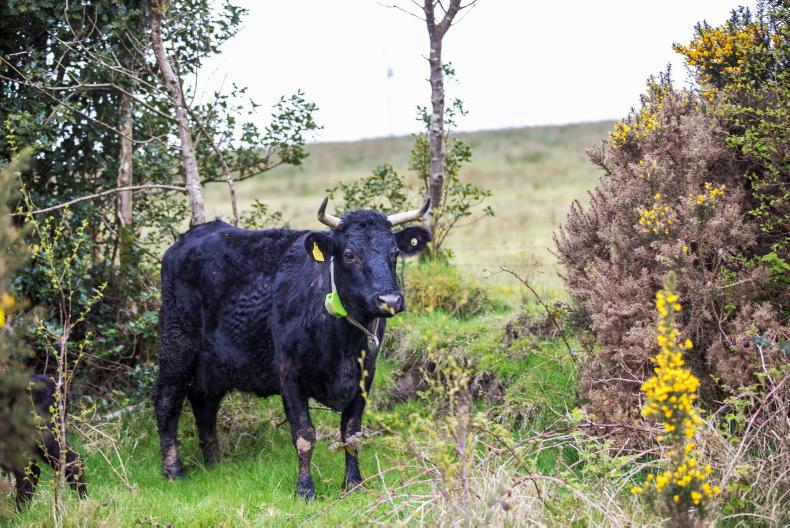
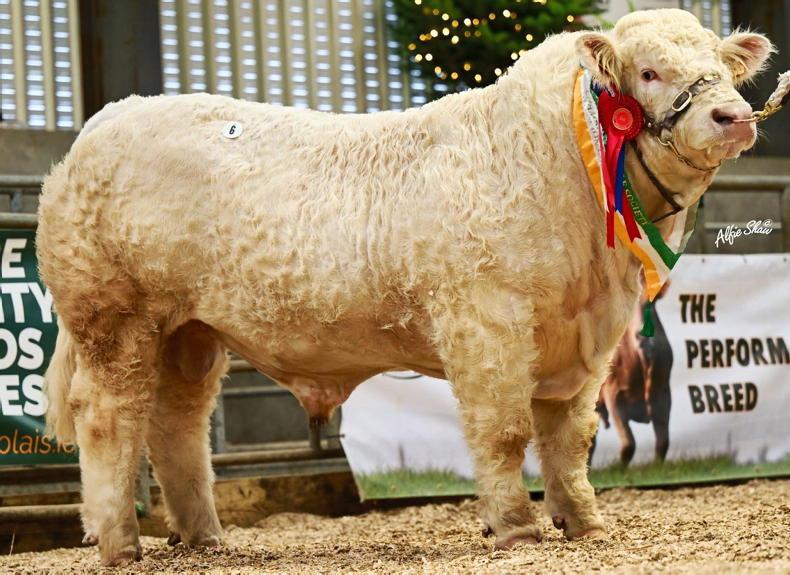
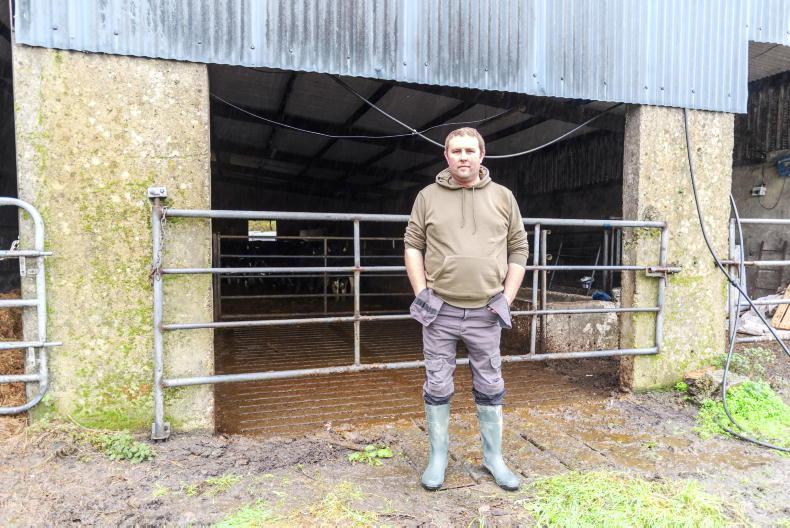
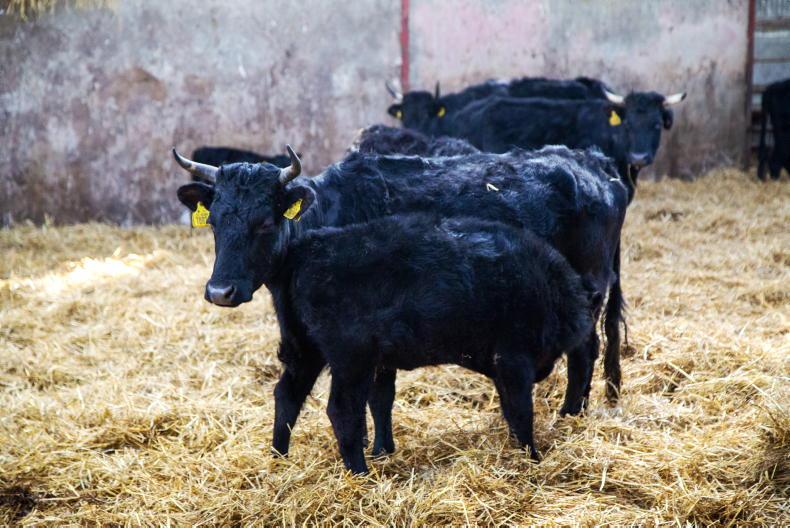
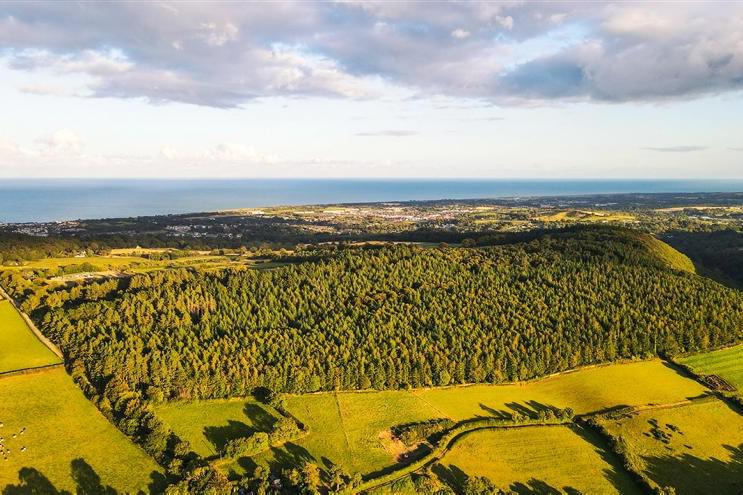
SHARING OPTIONS